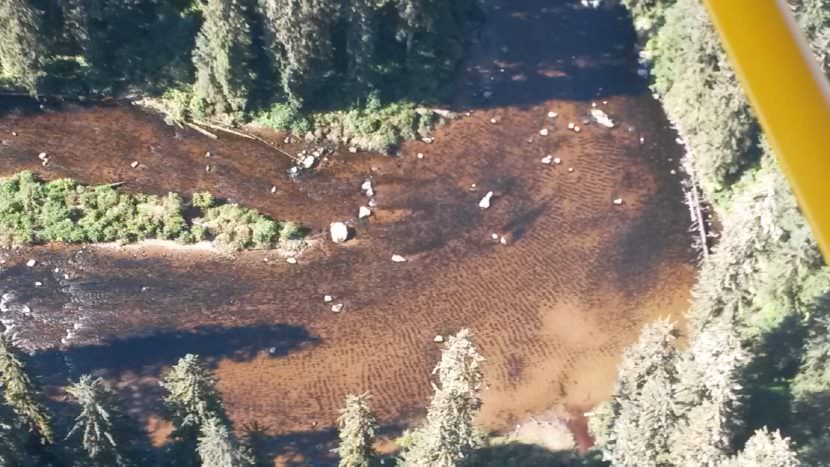
Commercial fisheries in Southeast Alaska have survived two years of state budget cuts but not without some changes.
The Alaska Department of Fish and Game’s Division of Commercial Fisheries has cut some positions, ended some monitoring programs, and found some new funding sources.
When the state cuts are listed on a spread sheet, the individual amounts don’t seem that staggering – $20,000 here, $50,000 there.
But it totals about $1.75 million over the past two years.
The cuts include laying off a part-time front desk person in Petersburg, not replacing a retired analyst programmer and eliminating a position in the golden king crab fishery.
Lowell Fair, regional supervisor for Commercial Fisheries in Southeast, said none of the cuts were good but they were necessary.
He said the golden king crab job was an observer who would collect data on the crab in season.
The position didn’t provide the most critical information for managing the fishery. And the golden king crab fishery is tiny anyway, compared with the Dungeness and the Tanner crab fisheries, so it got the ax.
“When we go to cut budgets we’re always looking for a cut that has the least impact on what we do,” Fair said.
Similarly, the division trimmed down its herring stock assessment programs in the region by $142,000, keeping only the two main areas: Sitka and Craig.
“Our goal is to maintain the most important fisheries, the biggest fisheries, the most valuable fisheries,” Fair said. “That’s usually the way we go; try and not affect those.”
Some of the Southeast cuts were replaced with other funding sources like grants.
About a $200,000 cut for tracking Coho salmon returns was fully replaced by money through the Pacific Salmon Commission.
But in some cases, the state has found itself deeper into the business side of fisheries.
Take the aerial salmon surveys for example.
In season, biologists fly multiple times a week to observe fish spawning in the clear mountain streams and monitor fishing effort by counting boats.
Southeast’s aerial salmon surveys have seen cuts of just over $130,000 the past two years. To make up the difference, the state is using more test fisheries.
The program allows the state to hire a fisherman to catch fish and then split the profits with the state.
Test fisheries have been used in the past for a variety of fisheries to not only bring in revenue but to gain data on some of the fish in specific areas.
“This would be an additional test fishery,” Fair said. “The main purpose is to get revenue so we can manage the fishery.”
Paying for the aerial surveys by way of the fish may sound reasonable, but there is some baggage. It creates competition.
“That puts hardship on the fishermen because in a sense we’re taking those fish from the fishermen,” Fair said.
The same thing happened with a $50,000 cut to the state’s black cod assessment program.
The Legislature gave the department authority to get the money from test fishery sales. And while it might not be popular with some fishermen Fair said the alternative could mean less fishing.
“If we can’t go and fly aerial surveys for salmon, for example, and we’re not sure how many fish are really spawning in these rivers well then we want to be conservative so we’re going to probably not fish as much to make sure that we’re getting enough fish in these rivers for sustainable runs down the road and that just means that there’s less harvest opportunity for the fishermen.”
Overall, the cuts to commercial fisheries in Southeast the past two years haven’t been debilitating for Fish and Game.
But future cuts would be a concern, Fair said.
“Right now we’ve cut about as much as we can cut without having serious impacts on any fishery,” Fair said. “So any future cuts really dig into our ability to manage efficiently.”
So far the budget for fiscal year 2018 proposed by Gov. Bill Walker does not have many cuts for commercial fisheries in Southeast. It’s encouraging but it will be up to the Legislature to keep it that way, Fair said.
